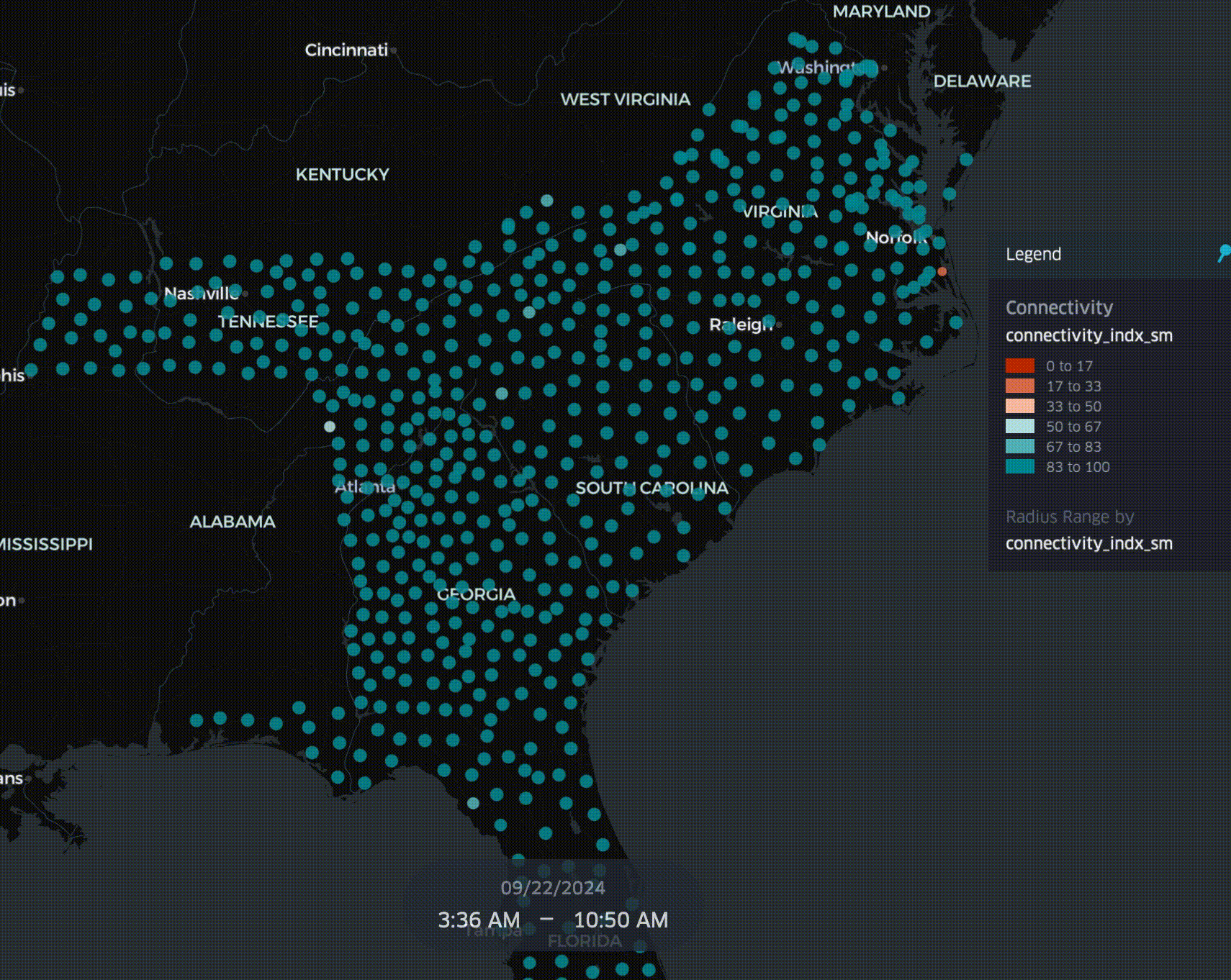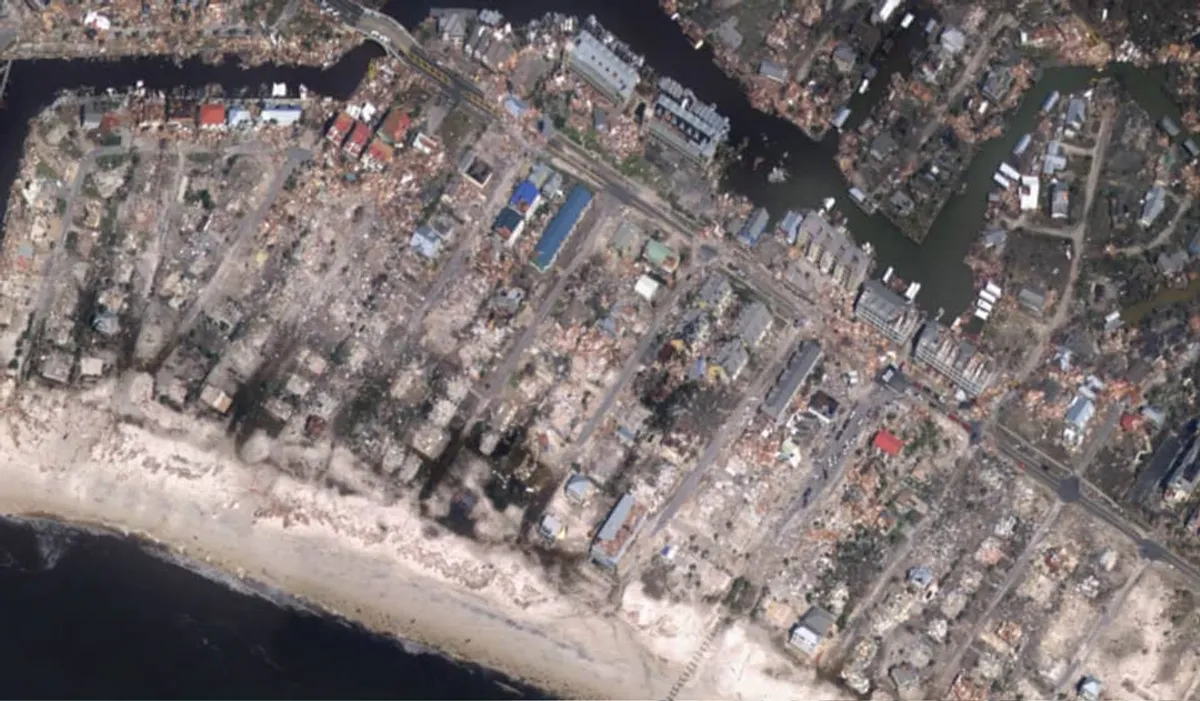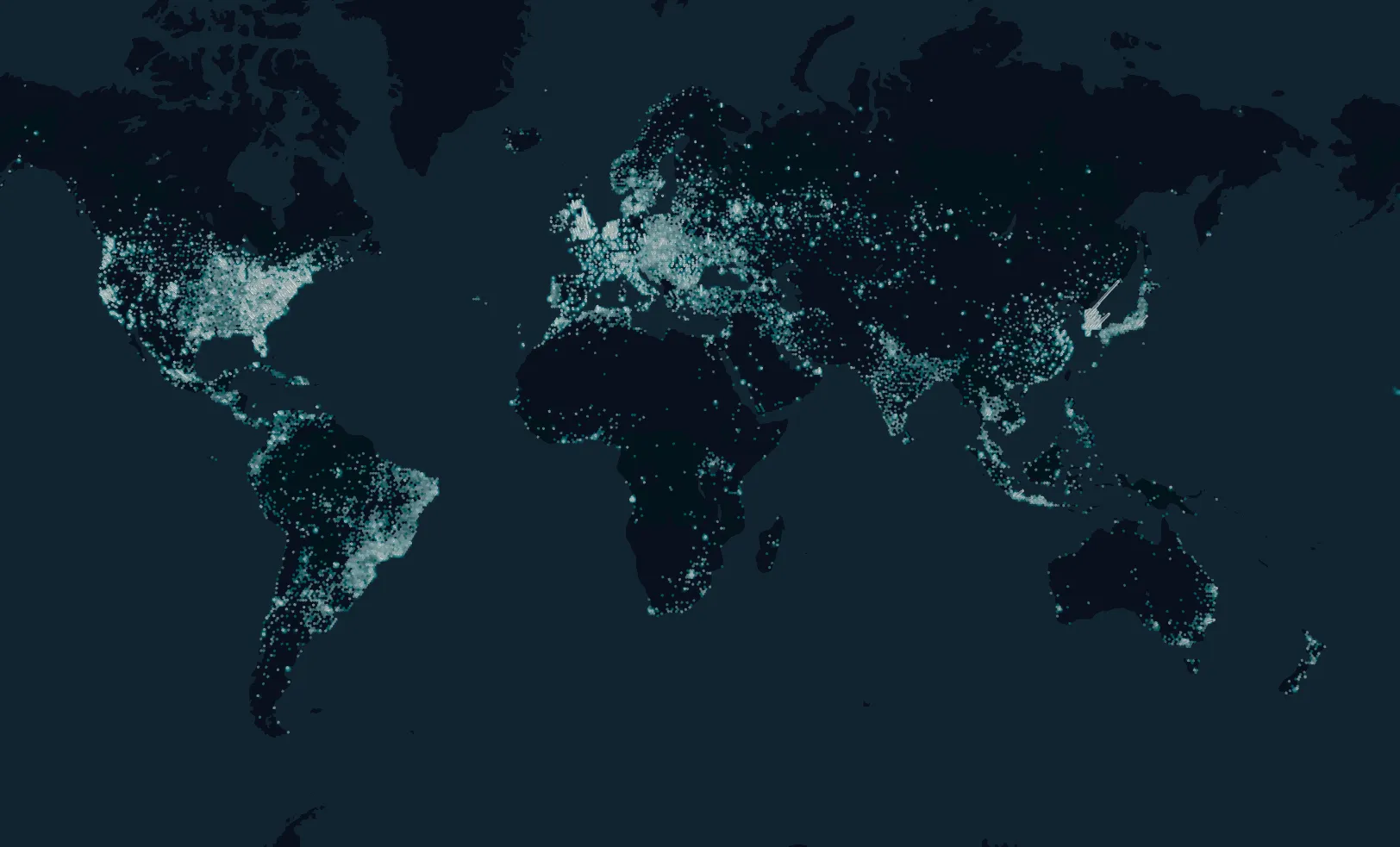Natural disasters, especially hurricanes, leave a path of destruction that can impact communities and economies for years. The recent hurricanes, Helene and Milton, were no exceptions, wreaking havoc in their paths and emphasizing the importance of real-time monitoring for disaster response. KASPR Datahaus has developed proprietary technology that continuously monitors global internet infrastructure at very fine spatial and temporal graunlarity. This allows us to provide real-time data on the status of communication networks during disasters, which is essential for effective recovery efforts. In this post, we explore the background of these hurricanes and discuss how our technology aids in disaster response.
Hurricane Helene
In late September 2024, Hurricane Helene struck the southeastern United States with unprecedented force. The storm made landfall in Florida’s Big Bend region as a Category 4 hurricane, with maximum sustained winds of 140 mph. Helene’s impact was felt across a wide swath of the southeastern U.S., including states like Georgia and the Carolinas, where it caused record-breaking flooding and extensive damage to power lines, homes, and infrastructure. Tragically, the storm resulted in hundreds of fatalities and billions of dollars in damage, making it one of the most devastating hurricanes to hit the U.S. mainland in recent years
Helene’s enormous size and strength were exacerbated by climate change, which contributed to the storm’s increased rainfall and stronger winds. According to climate scientists, warmer sea surface temperatures and higher humidity levels likely intensified Helene’s destructive power, adding to the urgency of addressing the impacts of such storms on infrastructure. Press enter or click to view image in full size

In the above animation, we visualize the path of destruction wrought by Hurricane Helene as it moved across the southeastern United States. This dynamic visualization uses data captured by KASPR Datahaus’s real-time internet monitoring technology, highlighting areas that experienced significant disruptions in connectivity as Helene made landfall and progressed inland. Bright, pulsating red regions indicate areas where internet outages were most severe, illustrating how the storm’s intense winds and flooding led to widespread communication breakdowns. The animation effectively shows the scale of Helene’s impact, from initial coastal landfall to its reach across multiple states, providing a stark visual of how natural disasters can severely disrupt essential digital infrastructure.
By combining our continuous, 24/7 monitoring data with geographic mapping, this animation also emphasizes how rapidly we can assess the infrastructure damage in real-time.
Hurricane Milton
Following closely on the heels of Helene, Hurricane Milton emerged as another formidable threat. While Milton was less intense, its impact was still severe, particularly in coastal communities already reeling from Helene’s aftermath. As recovery efforts were underway, Hurricane Milton’s powerful winds and heavy rains further stressed the affected areas, highlighting the cumulative toll of consecutive storms on vulnerable infrastructure and communities.

In the animation visualizing Hurricane Milton’s impact, KASPR Datahaus’s real-time data provides a look at how the hurricane disrupted ICT (information and communications technology) connectivity across Florida. As the animation progresses, areas affected by connectivity issues are highlighted, showing the gradual spread of outages as Hurricane Milton moves through the region.
KASPR Datahaus: Real-Time Internet Monitoring for Disaster Response
At KASPR Datahaus, our technology allows us to remotely monitor global internet infrastructure 24/7, providing real-time insights into how natural disasters affect connectivity. By tracking internet outages and disruptions as hurricanes progress, we offer crucial data that supports disaster response efforts. Our platform’s key features include:
-
Continuous Global Monitoring: We track internet performance in real time across the world, enabling us to identify outages and areas of concern quickly.
-
Data Visualization: Our technology generates detailed maps and animations that visually represent the impact of hurricanes on communication networks, helping responders prioritize recovery areas.
-
Rapid Response Capabilities: By monitoring outages as they happen, emergency services and governments can better allocate resources to the most severely affected areas.
Case Studies in Action
Our technology has previously demonstrated its effectiveness in mapping hurricane impacts in real time. For example:
-
During Hurricane Florence in 2018, our data illustrated the extent of internet disruptions across affected regions, providing valuable insights to responders. More on our Hurricane Florence mapping here.
-
With Cyclone Fani in 2019, our real-time mapping showcased the storm’s destructive path and its impact on communication networks in South Asia. Explore our Cyclone Fani insights here.
-
Our analysis of Hurricane Laura in 2020 showed how severe storms can cripple internet infrastructure, offering real-time insights that aided in disaster response. Read more on our Hurricane Laura findings here.
With Hurricanes Helene and Milton, we applied the same technology, mapping outages in real time and providing animated insights into each storm’s path of destruction. Harnessing Real-Time Data to Track Natural Disasters
As climate change drives more frequent and intense hurricanes, real-time monitoring becomes ever more crucial. By continuously measuring internet infrastructure during disasters like Hurricanes Helene and Milton, KASPR Datahaus enables responders to make informed decisions and accelerate recovery. Our technology delivers invaluable insights for emergency responders, government officials, and the insurance industry who need immediate insights into affected areas to allocate resources more effectively.
KASPR Datahaus leverages this technology to support response and recovery efforts by providing a clear, data-driven picture of where connectivity is most impacted, enabling faster, more efficient decision-making when it matters most.


